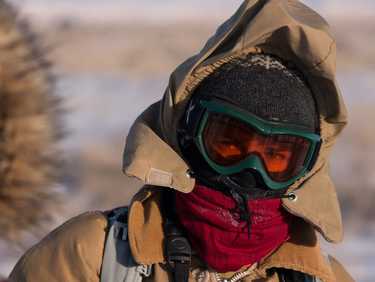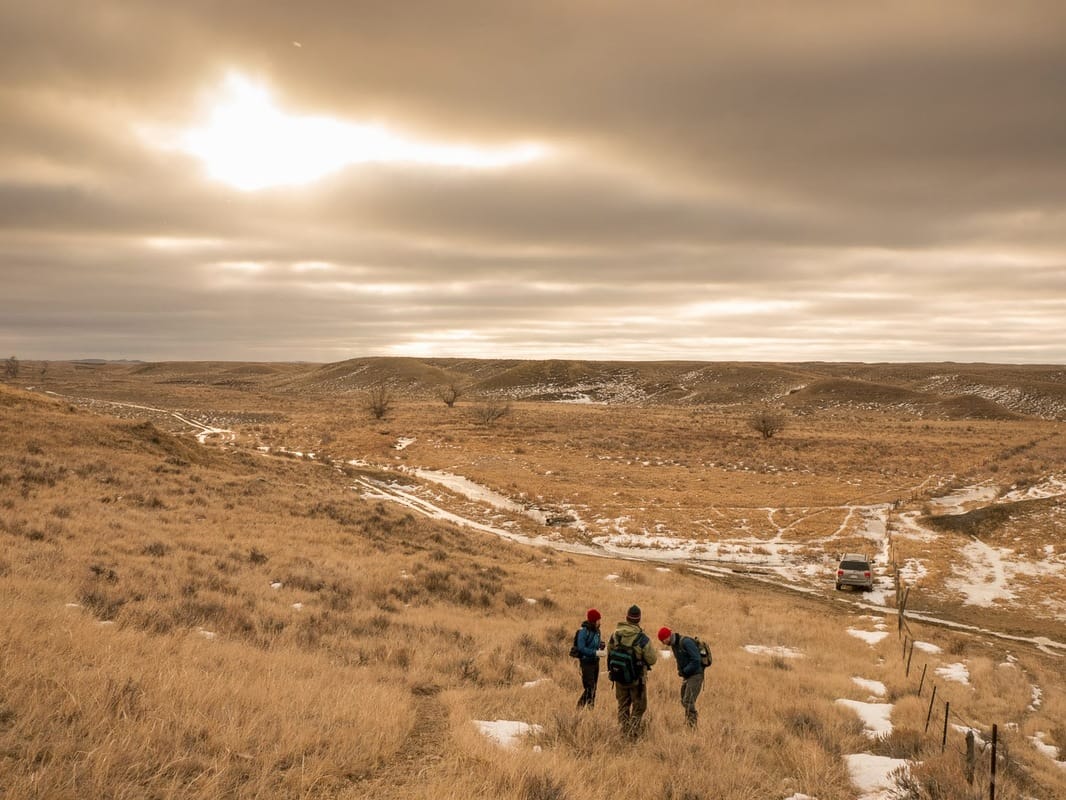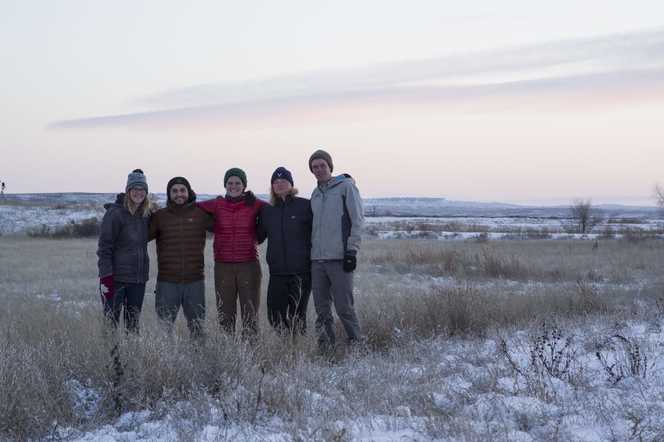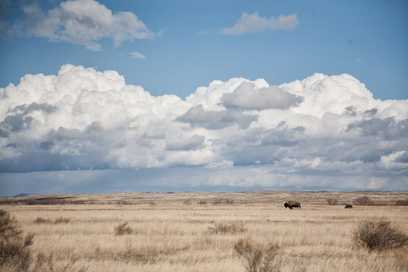Only four places on Earth still contain vast, unplowed native grasslands: Siberia, Mongolia, Patagonia and the northern Great Plains of the United States. Over the last few years Adventure Scientists has partnered with the American Prairie Reserve on the Landmark project, in which multi-national volunteer crews live on the reserve year round to collect key wildlife data, build a global constituency for this special ecosystem, and record the human experience of living on the prairie. American Prairie Reserve uses the data to manage and protect this wild landscape and advance their goal of creating the largest protected wildlife area in the continental United States.
 Colleen Ferris dressed for negative degree windchill on the first day of Landmark as a crew member in February, 2014
Colleen Ferris dressed for negative degree windchill on the first day of Landmark as a crew member in February, 2014
Over the last few years Landmark has collected baseline data to help the American Prairie Reserve measure success as its acreage grows over time. “Baseline data in any sector is important because you need to know where you started from in order to be able to measure change,” says Colleen.
The crews lived on the reserve year-round, checking camera traps and recording wildlife sightings along their designated transects, hiking over 10 miles a day in the subzero weather of January to the heat of July and August.
Like the Pronghorn, that first crew also thrived on the prairie. Since then over 80 volunteers from around the world including Sweden, France, Australia, South Africa, Russia, and Canada (“We’ve always had a Canadian on the crew – they’re so darn nice”) .
“It’s important to have people with boots on the ground who have talked with the locals and studied the wildlife so that they can be advocates for conserving extraordinary places like this. Working on Landmark as a crewmember, and then later as a project manager has opened my eyes to how human perceptions can shape and determine the level of success a project achieves in conservation.”
“Spending the past three years on Landmark has cemented the importance of open spaces,” she says. “Every time I go out there and see the sunrise or gaze into the horizon with its endless miles of grass, it cleanses my brain from the toxicity of everyday life. When you fall in love with a place like that, it just refills your cup and keeps you going.”



